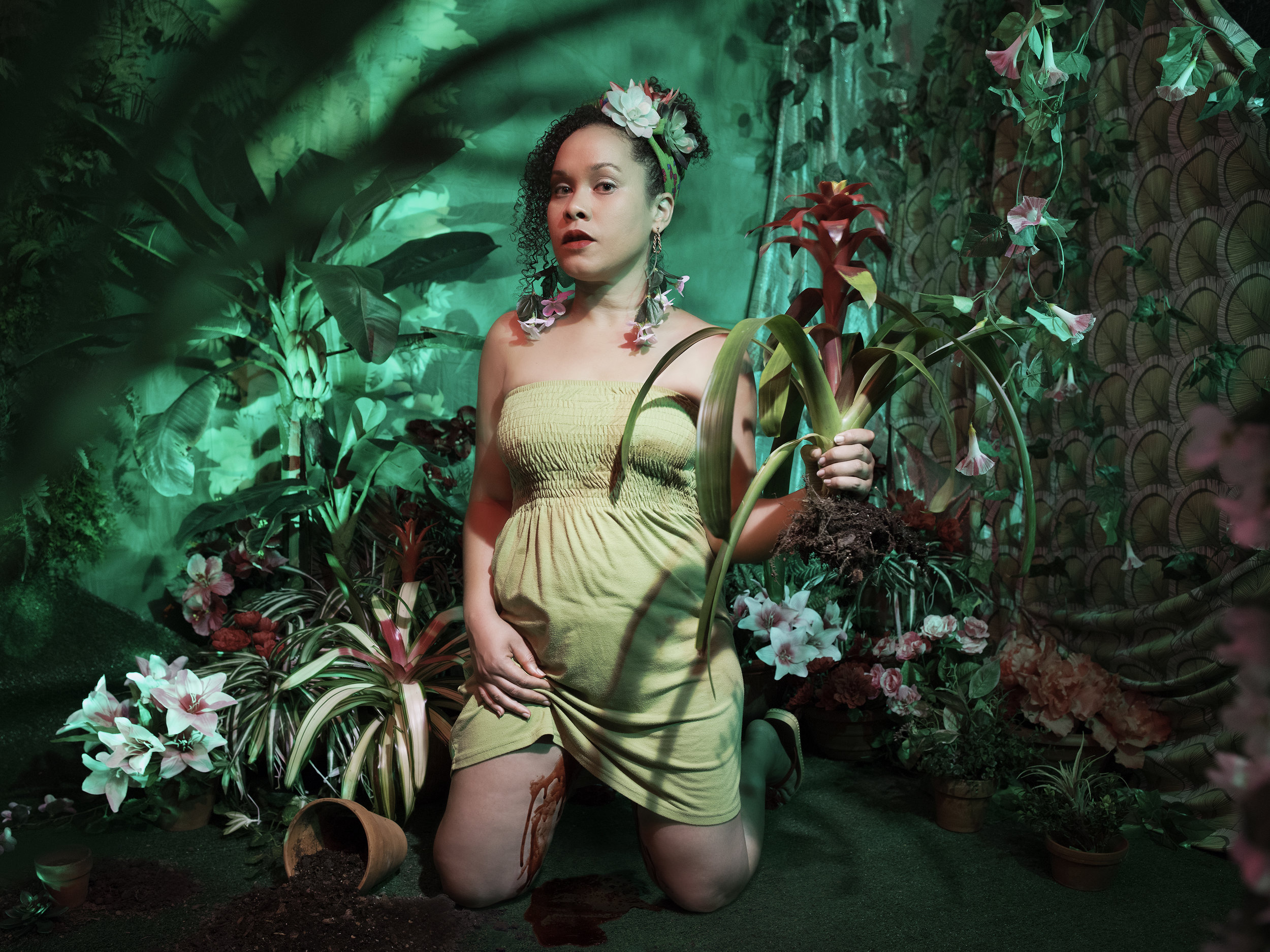The Island Repeated: Toni Alexia Roach’s Patterned Approach to Confronting the Past
Natalie Willis · 13

The land we live in feels like a repetition. We are a repetition of limestone rocks across shallow seas. We are repetitions of faces across families. We repeat the things we learn in school and church and wherever else – many times without critique, and, most disconcertingly, we repeat the same models of power–mainly paternalistic–from hundreds of years ago. This is at the heart of what Toni Alexia Roach gets to in her work for the NE9: The Fruit and the Seed. We look at the visual repetitions – palm tree after palm tree, and beach after beach – but we also see that these images are not symbolic of the place we live in, of the Caribbean, they are symbolic of the very idea of the Caribbean picturesque.
Roach, trained at the School of the Art Institute of Chicago (SAIC), takes her background in textiles, fashion, and design and applies it to this meticulous draughtsmanship in her works Lift Up Your Head (2018), and Long Live the King (2018). We see the plaid so often associated with Britishness, and particularly with Scotland who joined the United Kingdom to gain access to the slave trade – hence so many Bahamian family names are of Scottish origin. Strachan, Ferguson, and Campbell to name a few. Just as plaid is a repeating pattern, we see Roach using this repetition to drive her ideas home with another nod to textiles and fashion – the heraldry we so often see embroidered on tapestries of old.

She shares: “The backdrop for Long Live the King comes from a crest that I designed, or rather a cheeky rendition of a crest. I used the hound which represents loyalty, as a way to speak to my own views about the loyalty of Bahamians, more specifically in regards to politicians. The hound also represents courage, though here the hound is a potcake and the tail is tucked under as a way to raise questions about the actual courageousness of our politicians.”
But why the plaid, the crests, the heraldry? Simply, Roach is digging into the way that we reproduce and perpetuate these relics of the colonial era, and the deference or esteem with which we do so. Not unlike the beauty of the Caribbean, she draws us in with her deft draughtsmanship and carefully rendered images, only to then realise this is the honey for we poor flies to see the stinging, vinegar truth of our actuality, what we have been drawn into after years of forgetting. She uses this beauty as a way to speak to the history–its underbelly–and to the subsequent social conventions we struggle with today.
“I was thinking along the lines of the way we value eurocentric features, ideals, and ways of life. I’m interested in how we accept those values in place of our own at times. I question the standards that society holds, and thinking about it in the context of the economy of The Bahamas. There’s been shift in value of industries in this country. Where there was initially such a heavy value placed on agriculture, and where we see that shift to the importance placed on tourism. I use symbolism to work through those ideas.”
So the plaid and heraldry are dominant, and so too is the crowning “fake flamingo” inflatable – used as a way to speak to the hierarchy and hegemony of the outdated colonial ideals we continue to uphold. The boy in Long Live the King (2018) holds a staff and has a crown, but the staff is sugar cane and the crown is a false version of our national bird. What does this say about us? About our own value? It speaks to the presentation of ourselves for consumption by the wider world, initially imposed, and then continued at our own hand.

As the celebrated Martinican poet, politician, and founder of the Negritude movement Aimé Césaire wrote in his Discourse on Colonialism (1950): “It is no use painting the foot of the tree white, the strength of the bark cries out from beneath the paint.”. And so it is that Roach offers us a moment to reconsider the wider nature of the roots of this tourist-veneered, painted tree that is our land and our history.
The NE9: The Fruit and the Seed supports the work of 38 artists and runs through Sunday, April 7, 2019. All Sundays are free to Bahamians and residents.


